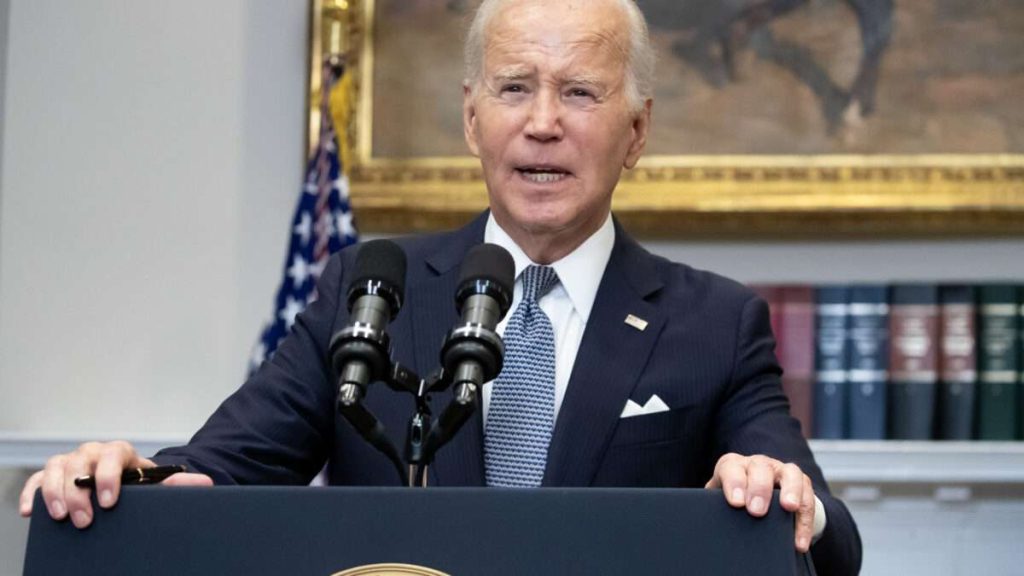On Monday, President Joe Biden announced a second attempt at federal student loan forgiveness. The new plan, which is estimated to affect over 30 million borrowers when combined with earlier efforts, aims to enact widespread loan cancelation primarily by expanding existing forgiveness programs and targeting borrowers with high balances due to accumulating interest.
The Biden administration’s first attempt at large-scale federal student loan forgiveness was struck down by the Supreme Court last year in Biden v. Nebraska. The plan, unveiled in 2022, sought to provide up to $20,000 in federal student loan forgiveness for borrowers earning less than $125,000 a year and couples earning less than $250,000 annually.
Last June, the Court ruled in a 6–3 decision that Biden’s original plan was unconstitutional, finding that the HEROES Act, the 9/11-era law used to justify the loan forgiveness, did not give the Education Department the authority to forgive over $400 billion in federal student loans.
In contrast, the Education Department’s new plan is much less ambitious—though it is still likely to cost taxpayers hundreds of billions of dollars. The plan has five major provisions, detailed in a Monday press release.
First, the plan takes aim at borrowers who have seen their balances climb due to unpaid interest, seeking to cancel up to $20,000 of accrued interest for all borrowers. For borrowers enrolled in an income-driven repayment plan (IDR) making up to $120,000 a year, or $240,000 a year for couples, the Education Department plans to forgive all accrued interest.
Biden’s plan would also automatically cancel debt held by people who are eligible for loan forgiveness under an existing plan but haven’t yet enrolled. Considering that all borrowers are eligible to enroll in Saving on a Valuable Education plan (SAVE), an IDR plan that provides forgiveness after 10 years for those with balances under $12,000, this new change could effectively create automatic forgiveness after 10 years for those with small balances.
Additionally, the Department of Education is seeking to cancel loan balances for those who entered repayment more than 20 years ago for undergraduate loans, and more than 25 years ago for graduate loans. In Monday’s press release, it is unclear whether there are any income or balance ceilings—though the release states that borrowers do not need to be on an IDR plan to receive forgiveness.
Further, Biden announced additional forgiveness for students who took out loans to pay for low-value degrees at schools that “lost their eligibility to participate in the Federal student aid program or were denied recertification because they cheated or took advantage of students,” as well as schools that closed and left borrowers with a low earning potential.
Finally, Biden’s plan aims to provide debt cancelation for borrowers experiencing “hardship.” While Monday’s press release is vague on specifics, it lists those at “high risk” of defaulting on their loans or borrowers with high medical or child care expenses as targeted under this slate of forgiveness.
It’s unclear how much Biden’s proposals will cost taxpayers. However, considering that the plan claims to initially affect tens of millions of Americans—with more people eligible every year—it’s safe to assume the plan will cost well over $100 billion over the next decade.
This newest effort appears designed to avoid another successful Supreme Court challenge by focusing primarily on expanding forms of forgiveness the Education Department has already successfully engaged in—albeit at a smaller scale.
While the Biden administration claims that this latest slate of student loan forgiveness will “make sure higher education is a ticket to the middle class—not a barrier to opportunity,” widespread loan forgiveness ultimately exacerbates the problems it aims to solve: that degree programs that cost too much, and that students take on more debt than necessary to attend school.
If borrowers feel confident that the government will lower their balances, universities are incentivized to hike prices—and tell students not to worry about the additional cost. However, Biden ultimately isn’t worried about the long-term effects of debt cancelation. Loan forgiveness is a popular proposal among the college-educated Democratic base.
There’s an election in November, and Biden may be trying to win it by promising a tantalizing financial windfall for millions of voters. Whether this ultimately makes college more expensive is another question entirely.
The post Biden Announces Second Attempt at Widespread Student Loan Forgiveness appeared first on Reason.com.







